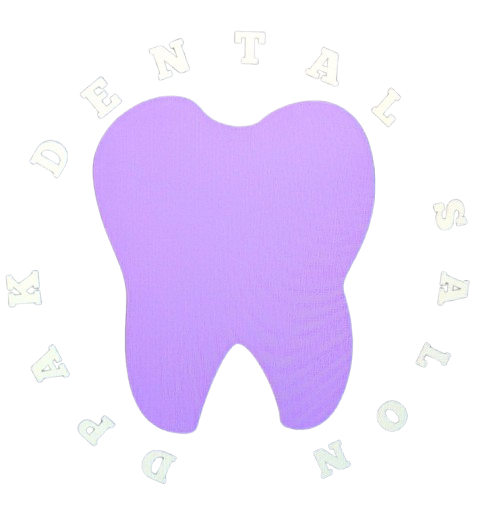Introduction: The Importance of Dental Crowns
Dental crowns, often known as caps, are critical fixtures in dental care. These caps are designed to encase the visible portion of a tooth, providing strength and enhancing appearance. Patients often choose dental crowns for various reasons, like shielding weak teeth, covering a dental implant, or enhancing the look of teeth. Crowns extend the life of a tooth that might otherwise be compromised.
The different types of dental caps available can address personal preferences and dental needs. In the sections that follow, we’ll explore a full range of options from porcelain to metal, each offering distinct advantages. By the end, you’ll be equipped with the knowledge necessary to determine which dental cap types might be best for you.
Understanding Dental Crowns
Dental crowns are protective covers placed over teeth. They help fix issues like decay, fractures, or improve aesthetics. This solution is common for crown types teeth that are cracked, heavily filled, or discolored. Here’s a simple overview of the process:
Preparation: The tooth is shaped to fit the crown.
Impressions: A model of your tooth is made to ensure perfect fit.
Temporary Crown: Worn while the permanent one is crafted.
Permanent Placement: The crown is cemented onto the tooth.
Different crowns last various lengths, from as little as five years to over 15, depending on crown materials for teeth.
All About Porcelain Crowns
Porcelain teeth crowns are popular for their natural appearance. They are suitable for front teeth as they blend seamlessly with your natural teeth. While the aesthetic appeal is significant, porcelain crowns can chip or wear down over time. Here are some pros and cons:
Pros: Natural look, perfect for visible areas.
Cons: Less durable than metal options.
To maintain porcelain crowns: – Avoid chewing ice or hard foods. – Practice good oral hygiene.
Exploring Ceramic Crowns
Ceramic crowns resemble porcelain teeth crowns but differ slightly. Modern ceramics such as Emax offer improved durability and aesthetics. They are typically used for visible teeth due to their natural appearance.
Strengths: Look like real teeth.
Weaknesses: Cost might be higher.
Care tips include: – Regular brushing and flossing. – Regular dental check-ups.
The Robustness of Metal Crowns
Metal crowns, made from materials like gold, nickel, or chromium, are very sturdy. They are not as visually appealing but offer unmatched durability.
Pros: Very strong, seldom chip.
Cons: Noticeable, metallic look.
Care for metal crowns by: – Maintaining regular dental cleaning appointments. – Avoiding hard sweets to reduce stress on the crown.
Porcelain-Fused-to-Metal: A Hybrid Approach
Porcelain-fused-to-metal (PFM) crowns merge the strength of metal with the aesthetics of porcelain. They offer a practical balance.
Advantages: Strong, natural colors.
Drawbacks: Gum line might show metal.
Maintain these by: – Gentle brushing around the gum line. – Regular dental visits to inspect the crown edge.
The Modern Edge of Zirconia Crowns
Zirconia crowns stand out for both beauty and strength. As a relatively new type of crowns for teeth, they offer excellent durability.
Best for: Molars needing strength and appearance.
Care recommendations:
Soft bristle brushing,
Avoiding teeth grinding.
Deciding on the Right Crown Type for You
When choosing a crown type, consider:
Location and Function: Stability or appearance?
Budget: Different types of crowns for teeth have varied costs.
Professional Guidance: Your dentist can offer invaluable advice based on your specific needs.
Pricing and Value: Crowning Costs Explained
Cost varies between crown types. Metal options are usually less expensive, while ceramic and zirconia are pricier.
Check insurance coverage as it might reduce expenses.
Evaluate long-term benefits of investing in durable dental crown materials.
A Step-by-Step Guide to Crown Placement
Here’s what to expect:
Consultation: Discuss options and needs.
Temporary Placement: Protects the tooth until the permanent crown is ready.
Final Fit: Placing the permanent crown.
Post-procedure involves minimal downtime but avoid hard foods initially for quicker recovery.
Maintaining Your Crown: Tips for Longevity
To care for your crowns:
Routine Cleaning: Use a soft toothbrush.
Avoid Hard Foods: Protect the crown from cracks.
Dental Check-ups: Regular exams ensure crown health.
Watch for Red Flags: See your dentist if you experience discomfort.
Conclusion: Making the Right Choice
In conclusion, explore all different types of crowns for teeth as each serves its purpose. Teeth cap types like porcelain or metal could provide what you need. Always consult with a dentist to find an option that matches your requirements. Investing in the right crown based on location, function, and aesthetic can lead to both a brighter smile and stronger teeth. Choose wisely!

